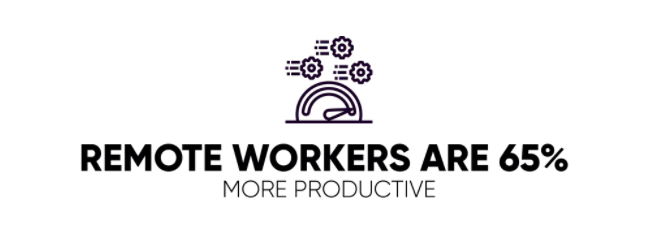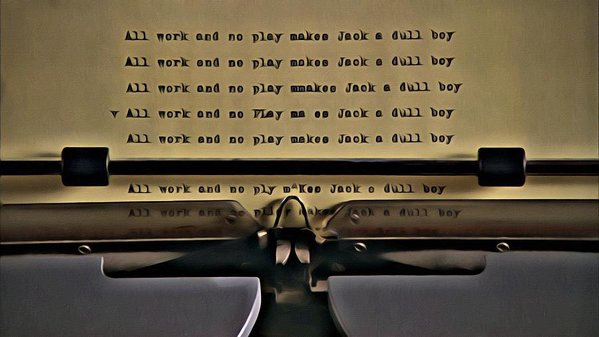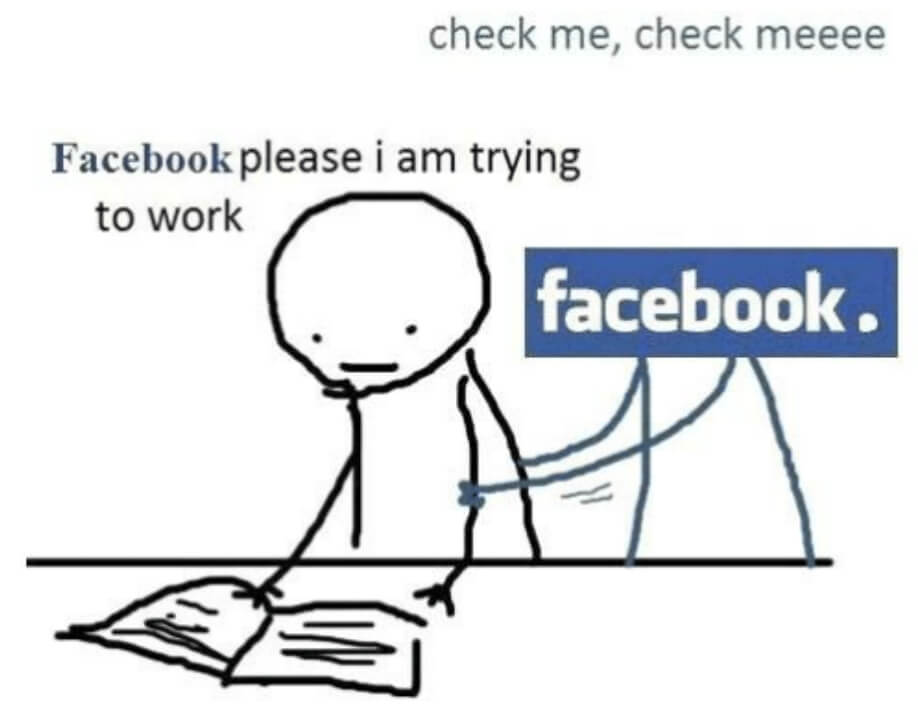Let me guess; you’re a special type of person; someone who lives life a little differently.
Perhaps you work from exotic lands overseas. Or perhaps you simply like to work from home and take as many breaks as you want.
Point is, you’re a remote worker, a worker with freedom over how and when they work, but this freedom can easily be a double-edged sword…
In fact, Buffer surveyed over 2,500 remote workers and revealed astonishing problems with remote work such as unplugging after work, loneliness and many more:

Picture: Buffer State of Remote Work 2020
These statistics point to one fact—remote work has serious issues.
(issues that can have a direct impact on one’s productivity.)
So in this article, I’ll break down 3 productivity strategies that, if you implement, will help you overcome remote work issues—and most importantly, help you spend your time doing the things you want to do.
So let’s get started!
Strategy #1: Create a solid routine for consistency
Remote workers may not have to show up at exactly 9 in the morning every day, it’s not a bad idea to set a schedule to keep yourself accountable, especially when you’re your own manager.
Moreover, as remote workers, there’s a significant disparity between how we imagine our days going, and how they actually end up. That said, with some practice and diligence, you’ll be able to tweak your routine for better performance.
And if you do so, your productivity can increase significantly. Recent remote work statistics collected by Carreerswiki.com show that remote workers are 65% more productive than traditional office workers. 
So here’s a few ways you can create a solid routine to boost your productivity:
Set realistic goals
Improving work performance requires creating a goal, and a solid routine is how you execute that goal.
For this reason, goal setting is the prerequisite to a solid routine as, without it, you’ll see yourself going about your workdays haphazardly.
Here are a few ways to go about setting goals:
- Breakdown bigger projects into daily and weekly goals. Breaking down will prevent you from getting overwhelmed and help with actionability.
- Leverage S.M.A.R.T goal-setting framework to create an actionable plan of action to achieve these goals.
- Take goal setting a step forward and plan your major goals for the whole year.
Create a schedule
After setting your goals, you’ll need a schedule to build a solid routine. Moreover, a schedule is important to inform a sense of actionability, especially in today’s distracting world.
So to create a schedule, try the following:
- First, figure out how many hours you want to work each day. You don’t have to be exact, but having an idea helps create a schedule.
- Based on the time required and goals set ( previous step), block out periods of your day for work.
Bonus tip: If you don’t know what time you should have a schedule, listen to your body.
“Whether you’re an early bird or a night owl, that’s a genetic predisposition,” he explains. “There’s only so much you’re going to be able to do to try to change that, ” says sleep specialist Micahel Breus.
Here’s a more comprehensive guide on how to set your own schedule: Productivity Principles for Remote Workers.
Leverage management tools
If you want to take scheduling a step further, you can integrate productivity tools into your routine. These tools can be leveraged to measure performance and collect data that can be further used to audit weak areas.
Here’s a few ways to leverage tech to create a routine:
- For daily and weekly goals, I use ToDoist. A simple and intuitive task manager that follows a dynamic to-do list design. It even allows me to set deadlines, priority and integrate with other apps.
- For comprehensive project management, consider using monday.com’s project management tool to integrate management and collaboration with bigger projects.
Make time for play
Although you should have a consistent schedule, it’s also important to take time off for special events, such as your kid’s soccer game or a friend’s wedding.
After all, all work and no play makes jack a dull boy… Or crazy…

Source: The Shining
So make sure you fit in a tie for personal hobbies, event and non-work related stuff to help you unplug from work.
The bottom line is when you’re consistent, you’ll work less and get more done. Yes, it’s that simple.
Now, creating a routine with clear tracking of your goals is fine and dandy— but it isn’t enough.
You need to train yourself to be efficient to maintain a-level performance during that schedule, which brings me to my next point.
Strategy #2: Use your time wisely for maximum efficiency
When you control your time, you work less. Plus, nothing feels better than getting 8 hours worth of work done in a fraction.
“One reason so few of us achieve what we truly want is that we never direct our focus; we never concentrate our power,” says motivational speaker Tony Robbins.
For this reason, it’s important to take control of our time to control of our workweek. So let’s take a look at some time-management techniques you can incorporate in your workflow.
Block all distractions
You’re not alone if you’ve lost an hour or two of your life, checking your Facebook feed. Recent studies even show that distractions online can cost workers close to 2 and a half hours of work productivity every single day!

The easiest way to not get distracted is to remove these temptations altogether. Try these things to stay focused:
- Use a website blocker like Freedom or StayFocused to stop any temptation.
- Turn off your smartphone notifications and only turn them back on when you’re done working.
- Eliminate or minimize negative people in your life to work stress-free.
Now that you’ve got a distraction-free work environment, let’s move on to the nitty-gritty stuff i.e. actually getting work done.
Leverage the Pomodoro technique
The Pomodoro technique is a simple technique that anyone can use to build up your concentration muscles, invest your time more intentionally, and simply do more each day.
Essentially, the technique looks like this:
- Time yourself for 25 minutes and work on a goal.
- Take a 5-minute break as a reward.
- Repeat. Once you complete four 25-minute sessions, you’re rewarded a longer 15-30 minute break.
The Pomodoro technique is a great way to balance working and rewarding yourself. But it’s not a magical pill; you still have to do the work.
And if you don’t have problems focusing, then the Pomodoro technique may not work for you since it’ll break your workflow. If you can focus for long periods of time, consider trying the deep work method.
Try deep work sessions
Unlike shallow work, which consists of checking emails, browsing the web, or texting, deep work is about creating value and enhancing your skills.
You can think of an author writing his novel, a computer programmer creating a new app, or a graphic designer designing a new webpage to get an idea of deep work.
And deep work can be broken down into 4 different approaches depending on your lifestyle:
- Hardcore monk-mode (think: locked in your room with your computer)
- Chunking your work sessions into two 4-6 hour sessions a day, with long breaks between.
- The rhythmic approach; working deeply for a couple of hours here and there.
- Working as a journalist, or whenever you have free time.
Just make sure you can handle the feeling of being alone if you go all-out monk mode…

Some people may find it beneficial to combine the Pomodoro technique with deep work sessions as well. For example, you can start with the Pomodoro technique in the morning and end your day with a bimodal deep work session in the evening.
Even with good work habits, you’ll only end up doing damage if you don’t have the proper posture when working. That leads me to the next section…
Strategy #3: Buy good equipment for a healthier body
The third strategy is something often overlooked by remote workers— but it can be the most important.
Because the last thing you want when working is to end up with a messed-up back because you’re slouched over all day.
Everything from your posture, appearance, and mood can be affected by bad spinal posture. It is also estimated that 50% of people in the industrialized world suffer from back pain.
That’s why it’s important to invest in the right tools. Let’s take a look at how to optimize your workspace so you can work more efficiently and with less pain.
Use an ergonomic chair
Look, everyone thinks about the laptop but what your butt is sitting on every day is just as important.
Think of your chair as a long-term investment, because your most important tool— your body— will thank you for it.
“Even after marathon writing sessions, I remain comfortable and don’t feel any arm or shoulder soreness, which has been a problem with other chairs I’ve tried,” says James Brains of Business Insider.
All-in-all, consider these things when looking for a good chair:
- Adjustable seat height so your feet are flat on the floor.
- Lumbar support, so it conforms to the ‘S’ on your lower back.
- Reclinability so you can lean back depending on how your body feels throughout the day.
You know this guy did his research.
Here’s a more comprehensive checklist: Building Your Home Office
Along with a proper chair, you’ll need a laptop stand for maximum posture satisfaction.
Get a good laptop stand
Laptop stands are great because if you’re working from most tables, you’ll be looking down. And we all know what bad posture looks like.
Investing in a good laptop stand can be one of your best investments as a remote worker because they:
- Straighten out your neck, so you’re not straining it by looking down.
- Open up your back. This will straighten out your posture and get rid of your hunchback.
- Allow you to work from anywhere, no matter the table height. Some stands even allow you to work in bed.
You can combine a good ergonomic chair with a laptop stand to deal with the ultimate one-two combo for posture and bodily fatigue.
Now that we have posture covered, let’s move on to one more strategy that every remote worker needs in their repertoire…
My friend Mark Behnken’s dived deep into ergonomic work gear, I recommend checking out his article for more information on the same.
Want to know the best apps to install on your laptop? Check out 20 Best Productivity Apps for 2020.
The Final Strategy: Optimize yourself for maximum productivity
It may be obvious, but being productive as a remote worker really depends on you. That’s because freedom is a double-edged sword: you can do whatever you want, but you should hold yourself accountable.
And nobody is going to be there to hold you accountable except yourself.
As self-improvement expert Paul J. Meyer says, ““Productivity is never an accident. It is always the result of a commitment to excellence, intelligent planning, and focused effort.”
The truth is, there’s no one-size-fits-all solution to productivity. So try out different strategies, measure your progress, and optimize based on results.
So once you find your own set of productivity strategies to live by, stick with them and work your hardest…
Because in the end, you’ll gain more freedom by being your own boss.
Read next:
How to Deal With Procrastination? 4 Main Types of Procrastinators


